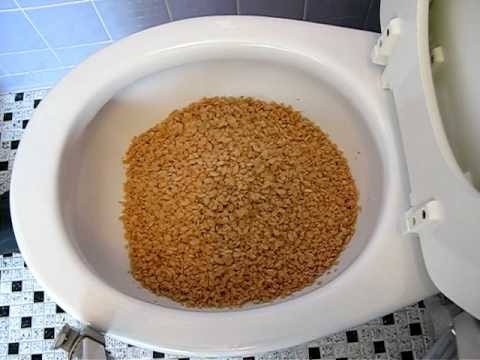Is it Sensible to Dispose of Food in the Toilet?
Is it Sensible to Dispose of Food in the Toilet?
Blog Article
The writer is making a number of good points on Think Twice Before Flushing Food Down Your Toilet in general in this article followed below.

Introduction
Many people are often faced with the problem of what to do with food waste, especially when it involves leftovers or scraps. One common inquiry that occurs is whether it's alright to purge food down the bathroom. In this post, we'll delve into the reasons that individuals might take into consideration flushing food, the repercussions of doing so, and different techniques for correct disposal.
Reasons why people might think about flushing food
Absence of understanding
Some people might not understand the potential harm triggered by flushing food down the commode. They might mistakenly believe that it's a harmless practice.
Benefit
Flushing food down the toilet may appear like a quick and easy option to taking care of undesirable scraps, especially when there's no close-by trash can available.
Laziness
In many cases, people may merely pick to flush food out of sheer laziness, without considering the repercussions of their activities.
Effects of flushing food down the bathroom
Ecological impact
Food waste that winds up in rivers can add to air pollution and harm aquatic ecosystems. Additionally, the water made use of to purge food can stress water resources.
Plumbing problems
Purging food can lead to stopped up pipelines and drains pipes, causing pricey plumbing repair services and aggravations.
Sorts of food that ought to not be purged
Coarse foods
Foods with coarse textures such as celery or corn husks can obtain tangled in pipelines and create obstructions.
Starchy foods
Starchy foods like pasta and rice can absorb water and swell, causing blockages in pipes.
Oils and fats
Greasy foods like bacon or cooking oils should never ever be purged down the bathroom as they can strengthen and trigger blockages.
Proper disposal approaches for food waste
Utilizing a waste disposal unit
For homes equipped with garbage disposals, food scraps can be ground up and purged with the pipes system. However, not all foods appropriate for disposal in this fashion.
Recycling
Specific food product packaging products can be recycled, lowering waste and decreasing environmental influence.
Composting
Composting is a green way to throw away food waste. Organic products can be composted and utilized to improve soil for horticulture.
The importance of correct waste management
Reducing ecological harm
Proper waste administration techniques, such as composting and recycling, help reduce air pollution and protect natural resources for future generations.
Safeguarding plumbing systems
By preventing the method of flushing food down the bathroom, house owners can prevent costly plumbing fixings and preserve the integrity of their plumbing systems.
Final thought
In conclusion, while it may be appealing to flush food down the bathroom for convenience, it is very important to comprehend the potential effects of this action. By embracing correct waste management practices and taking care of food waste properly, individuals can add to healthier plumbing systems and a cleaner setting for all.
FLUSH FOOD DOWN THE TOILET?
FLUSHING FOOD CAN CAUSE BLOCKED DRAINS IN YOUR HOME
All of the plumbing fixtures in your home are connected to the same sewer pipe outside of your home. This outdoor sewer pipe is responsible for transporting all the wastewater from your home to the Council sewer mains. Even small pieces of food that go down the kitchen sink can cause problems for your sewer. It should therefore be obvious that flushing larger bits of food, such as meat, risks a clog in either the toilet itself or the sewer pipes. Flushing greasy food is even more problematic because oil coagulates when it cools, coating the interior lining of your pipes.
THE TOILET IS NOT A BIN
Food isn’t the only thing that people shouldn’t be flushing down the toilet. People use the toilet to dispose of all kinds of things such as tampons, makeup wipes, dental floss, kitty litter and even underwear. Water goes to great lengths to educate residents about the high costs and stress placed on wastewater treatment systems simply from people flushing the wrong stuff down the toilet. It costs taxpayers millions of dollars each year, and homeowners thousands in blocked drain repairs.
FLUSHING FOOD IS A WASTE OF WATER
Flushing food is a waste of our most precious resource - water. In June this year Level 1 water restrictions were introduced to protect water supply from drought conditions. Much of New South Wales continues to be affected by prolonged drought with recent figures revealing up to 97 per cent of the state remains in drought. Depending on whether you have a single or dual flush toilet, every single flush uses between five and 11 litres of water. In the current climate this is a huge amount of water to be wasting on flushing food that should be placed in the bin (or better yet, the compost).
https://www.jabplumbingsolutions.com.au/blog/can-you-flush-food-down-the-toilet

We had been shown that write-up on Is it safe to flush food (especially rice) down the toilet? from an acquaintance on another web address. Sharing is caring. You won't know, you may very well be helping someone out. Thank you for your time. Kindly come by our site back soon.
Call Today Report this page